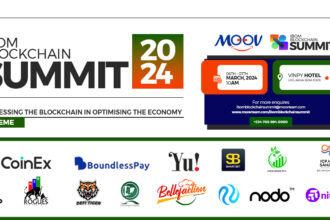If you’ve ever asked yourself, “Can I earn money just by holding crypto assets?” The answer is yes, and it’s through crypto staking.
Imagine buying a piece of land and letting someone farm on it. Every month, they pay you a portion of the crops as rent without you lifting a finger. Now, that’s passive income and crypto staking works in a similar way.
In this guide, we break down crypto staking in a friendly, simple way. No tech jargon. No confusion. Just clear steps to help you understand how staking can put your idle crypto assets to work and start generating rewards.
What is Crypto Staking?
At its core, crypto staking is the process of locking up your crypto assets to support the operations of a blockchain network and in return, you earn rewards. The concept is similar to earning interest in a savings account.
For example, you buy 100 units of Ethereum (ETH), Solana (SOL) or Cardano (ADA). Instead of just keeping them in your wallet, you can stake them using any supported platform or wallet. In doing so, you get to receive small rewards in the same currency just for helping secure the network.
Read also: Crypto Airdrops Explained
How Does Staking Work?
Many blockchains, including Ethereum, Solana, and Cardano, use a system (consensus algorithm) called proof of stake (PoS). Unlike Bitcoin’s mining system or proof of work (PoW) consensus algorithm that consumes massive energy, PoS relies on users locking up their crypto assets to validate transactions and secure the network.
When you stake your crypto, you commit it to the network and help verify/validate transactions. In return, you receive staking rewards, typically in the same cryptocurrency.
Notably, you can unstake your assets at any time, unless the platform has a fixed lock-up period.
Read also: How to Get Started in the Crypto Industry: A Comprehensive Guide
What are the benefits of crypto staking?
If you’re planning to hold your coins or tokens long-term, staking offers some serious perks, including:
1. Earn passive income: This is the biggest advantage of crypto staking. Rather than letting your crypto assets sit idle, staking allows you to earn extra crypto.
2. Support the blockchain network: Your staked cryptocurrencies help secure and maintain the network, making you an active participant in the network.
3. Eco-friendly alternative: Unlike crypto mining, staking is energy-efficient and doesn’t require expensive hardware or high electricity.
Read also: What is Crypto Trading? 4 Types You Can Engage In To Make Money
What are the risks of staking?
Here are a few risks every beginner should know about crypto staking:
1. Lock-up periods: Some tokens and platforms require you to lock your crypto for days, weeks or even months. This means that you will not have access to your staked crypto assets until the lock-up period elapses. It’s therefore important to always read the fine print about unstaking terms before committing your tokens.
2. Price volatility: Crypto prices are unpredictable. You might earn rewards, but if the token’s value crashes, your total returns could still suffer.
3. Platform risk: Some staking platforms are centralized or insecure. If they get hacked or collapse, your staked assets could be at risk. Therefore, endeavour to stick with reputable exchanges and wallets to reduce this risk.
Read also: Bitcoin Mining Centres – Everything You Should Know
Where can you stake crypto?
There are three main ways to stake your crypto assets:
1. Centralized crypto exchanges: Platforms like Binance, Coinbase, Kraken, and KuCoin offer beginner-friendly crypto staking services. The pros of crypto exchanges are easy setup, flexible staking options and no technical skills required. On the other hand, the cons of staking on centralized exchanges include zero control of your private keys and platform risk (e.g., FTX fallout).
2. Crypto wallets: Non-custodial wallets like Trust Wallet, Yoroi, Keplr, and MetaMask allow crypto staking directly from your app. With crypto wallets, you control your private keys and also enjoy greater decentralization. On the other hand, some crypto wallets may not support as many tokens as exchange platforms.
3. Staking pools: Staking pools are collective groups of cryptocurrency holders who combine their tokens to increase their chances of earning staking rewards. By pooling resources, participants can access more consistent returns and participate in staking even if they don’t meet the minimum staking requirements individually. Simply put, staking pools enable users to combine tokens and increase their chances of receiving rewards. It is ideal for people staking small amounts.
Read also: Uphold Explores XRP Staking via Flare Network, Expands U.S. Crypto Offerings
How to Start Crypto Staking (Step-by-Step)
Want to start staking your crypto assets? Here’s how to start staking in two common ways:
Option 1: Using a Crypto Exchange (e.g., Binance)
1. Sign up and buy the crypto (e.g., ETH, ADA, SOL).
2. Navigate to the “Earn” or “Staking” section.
3. Choose the crypto to stake.
4. Select flexible or locked terms.
5. Click “Stake Now” and confirm.
Option 2: Using a Wallet (e.g., Trust Wallet)
1. Install the wallet and deposit tokens.
2. Tap “Earn” or “Staking.”
3. Choose your token and validator.
4. Enter the amount and confirm.
5. Monitor your rewards directly in the app.
Read also: 8 Best DeFi Platforms To Earn Interest
Final thoughts
If you plan to hold your crypto, staking is one of the smartest things you can do. It turns your idle assets into income-generating tools. However, remember to start small, always check lock-up rules and platform safety while diversifying across different staking options. Ready to begin your crypto staking journey? Pick a platform, stake some crypto assets of your choice, and let them start working for you while you sleep.






